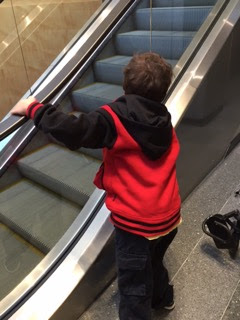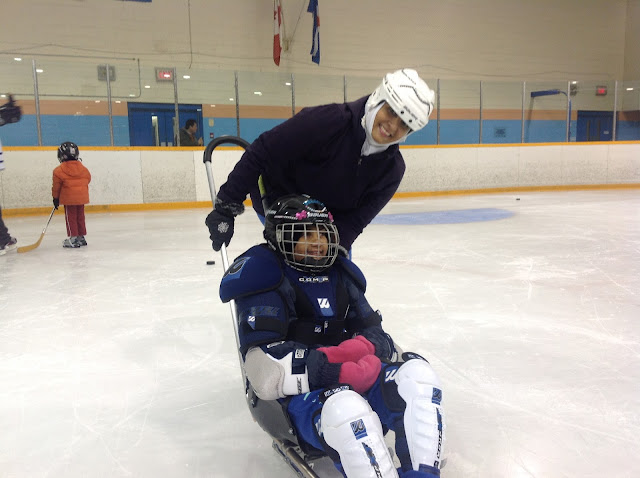I’ll never forget a time I went to visit a child in the neonatal intensive care unit (NICU). I was in the waiting room during a shift change, and another mom was talking about her newborn and said that the doctor had recommended withdrawing care. “I realize he’ll have cerebral palsy,” she said, “but he’s still my my son.”
Predicting how a newborn with brain injury will be affected is a science marked with uncertainty, yet parents need to make decisions about treatment. At the same time, parents and doctors may have different beliefs about whether it’s possible to live a good life with severe disability.
Given these dilemmas—and the ethical questions they prompt—a group of researchers published an article in Developmental Medicine and Child Neurology suggesting five qualities clinicians need to keep top of mind when working with parents.
They are reflection, humility, open-mindedness, partnership and engagement.
The research was funded by the Kids Brain Health Network and brought together neonatologists, parents, child neurologists and other clinicians.
BLOOM interviewed lead investigator Eric Racine, director of the Neuroethics Research Unit at the Clinical Research Institute of Montreal to learn more.
BLOOM: What do neonatologists say is most challenging about giving a prognosis?
Eric Racine: Our paper speaks to the tension between the desire to obtain certainty about a child’s future outcomes and the lack of data to make such calls.
BLOOM: I assume that clinicians feel a lot of pressure from parents to make a definitive prediction?
Eric Racine: I think you will see parents who really desire certainty, as well as parents who are comfortable with uncertainty. There have been studies with patients and parents who say they appreciate clinicians who can communicate the uncertainty of prognoses, so it may be an assumption that we think we need to provide certainty to parents. We probably shouldn’t underestimate the complexity of information that can be conveyed to parents—not in one clinical encounter, but as part of an ongoing relationship.
BLOOM: The paper suggests that doctors hold biases against disability.
Eric Racine: Biases against disability—and a misunderstanding about the possibility of a good quality of life with disability—are common challenges and in some ways explainable. Clinicians are trained to heal, to treat, to alleviate injuries so their own professional ethos is driven by a desire to avoid ‘poor outcomes.’ For this reason, doctors need to make an additional reflection to put these values in brackets and say ‘people from different backgrounds may view things differently.’
BLOOM: What was the goal of your research?
Eric Racine: To provide an ethics framework for communication with parents of a newborn with severe brain injury. It includes a number of questions that foster self-reflection and self-assessment in clinicians. We didn’t provide guidelines because we felt that this would be too prescriptive.
BLOOM: You list five qualities that clinicians should demonstrate when working with families.
Eric Racine: Yes. The first one is reflection. This is the ability to step back and re-examine one’s immediate opinions about prognosis and ask questions. It’s having the mind-frame that no matter how much experience you have, perhaps others would think differently about the prognosis or the quality of living with those projected disabilities.
BLOOM: The next one is humility.
Eric Racine: When you realize the limitations of scientific knowledge and your own knowledge, and the existence of your own biases, you need to remain careful in giving any kind of definitive opinion about “This child will …” The idea of humility is a buffer to any form of arrogance. The clinician, who has seen many, many similar cases, may appear arrogant or distant to the parents who are really struggling at the bedside.
BLOOM: So you’re saying that because the doctor may have seen these cases so many times, they may appear indifferent to the enormity of what the parents are going through?
Eric Racine: Yes, this is something they do every day. But there are ways to be empathetic and connect with parents that dampen perceptions of being distant or arrogant.
BLOOM: I’m sure that in some ways when a doctor appears distant it is perhaps because they’re protecting themselves from their emotions.
Eric Racine: That’s why self-reflection is so important. We need to take a step back and ask ‘why are we doing things this way?’ If it’s because the situation is painful and difficult, then that needs to be acknowledged and discussed in clinical teams so that the root causes are [recognized] and addressed.
BLOOM: The next quality is open-mindedness.
Eric Racine: This is about being willing to be confronted or challenged by outcomes that contradict your prediction, or by values other than your own. A clinician may view things one way, and the parents may view it very differently. It’s important to respect where people are coming from. It’s also important to be open-minded about things not going the way you predicted they would go.
Partnership is the next idea, and there’s a whole literature supporting shared-decision making and more collaborative interaction with parents. The idea is that people bring different strengths or types of knowledge to the table. It means that maybe parents don’t have the technical experience, but they may have other important pieces of the puzzle. They may have a sense of what it will be like for them to live with a situation. There are different models of partnership.
For example, sometimes a parent is recruited to be an advisor in the NICU environment. It’s important that families know they can be connected with other families who have gone through similar situations. It may not be obvious to parents how they can be involved, so clinicians need to let them know about the opportunities.
BLOOM: When you’re talking about care decisions being made, are you mainly talking about whether a decision to withdraw care is being considered?
Eric Racine: Yes, that’s one of the big decisions. But there are other kinds of decisions related to treatment and palliative-care options. A lot of these are difficult, end-of-life situations.
BLOOM: The last quality is engagement.
Eric Racine: That springs from the fact that we’ve heard parents voice concern and sadness about the fact that when they leave acute-care there is limited support for them.
BLOOM: So you mean when parents bring a child home? That they no longer have contact with the NICU doctors?
Eric Racine: Yes. It’s important for neonatologists to realize that there’s a gap in ongoing services for the patient and for the family unit, and to do something about it. The acute-care environment needs to do a better job at bridging with chronic-care environments. It’s not good that families have such limited resources and that they feel abandoned. Clinicians need to be engaged and be advocates. They need to participate in generating long-term follow-up data. One of the critical gaps is building databases where outcomes are collected and predictions are tested for their validity.
BLOOM: I imagine that in addition to needing to have a better understanding of outcomes, it’s important for clinicians to understand how families cope over the long term.
Eric Racine: Yes. I’m in favour of collecting holistic data—not just about the disabilities and function of a child, but about the family unit and the impact on the family. Parents in acute-care want to know what it’s like to raise a child with severe neurological impairments. They want to know how that works in reality. Most people don’t have a clue about that.
BLOOM: Is there a role for stories about real families here?
Eric Racine: Yes. Those narratives would be an interesting way to engage families in conversations. It can be hard to make sense of family experiences, however. You can have a family of a child with very minimal cognitive impairment who are really, really struggling and finding it very, very difficult. And then you can find situations where the child has very severe neurological impairment but the family seems very happy.
BLOOM: I was at a conference on how the devaluation of disability influences medical care of disabled children. And a neonatologist stood up and said that in her field there was an unspoken bias where doctors are willing to go to extreme lengths to accommodate a child with severe physical disabilities. But that they believe an intellectual disability is ‘a fate worse than death.’
Eric Racine: We’re aware that there are these biases and clinicians admit they exist. We’ve done some research with Canadian physicians and we get a sense that there’s a bias towards brain health, or a negative prejudice about anything that concerns the brain. That’s now documented. But how exactly it may, or may not, impact clinical decisions needs to be further investigated.
But even if those clinical biases don’t change decisions about withdrawal of life support or the kind of care offered, they can generate profound hurt in parents and even have an impact on the relationship between the parents and the child.
Parents are left to ask: ‘Am I wrong to be caring for this child?’ They can be judged as lacking common sense. Certainly in our paper we consider these biases inappropriate. When they exist, they must be recognized and reflected on and should not be imposed on families.
BLOOM: I think the principles the paper suggests are excellent. But I wonder how a very busy doctor would have time to reflect on implicit biases they have—or even know how to do that? Wouldn’t that require some kind of ongoing training and formally bringing clinicians together to discuss these issues?
Eric Racine: You’re right about pointing to this limitation. This is a first step. I think the next step for us is thinking about how we can bring these ideas closer to a clinical environment and how we can help clinicians who want to take ownership of them and discuss them.
BLOOM: The paper talks about how doctors need to respect the value system of the parents. But what if parents of a child with a very minimal disability say they won’t accept their child?
Eric Racine: I think there are situations where withdrawal of life support would be completely inappropriate and neonatologists would step in and be advocates for their primary patient—the child.
There are also times when it’s inappropriate to continue care and parents won’t let go and neonatologists have to step in and ask questions about the meaning of the care offered, especially if it involves pain, suffering and prolonging of a life that is extremely limited. There are extremes on both ends of the spectrum.
By Louise Kinross




































